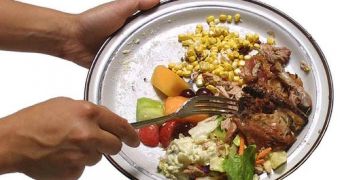A new report released by the Natural Resource Defense Council and the Harvard Food Law and Policy Clinic argues that people living in the US throw away a whopping $165 billion worth of food on a yearly basis, and that some 40% of the food produced in this country each and every year never gets eaten.
To make matters even worse, it appears that, of the $165 billion (€122 billion) worth of food that ends up in the trash bin, most is still edible.
The researchers who pieced together this report argue that, as far as they can tell, the US wastes this much food over the course of just 12 months due to the fact that, more often than not, people fail to make head and tail of the labels shown on packages.
Thus, some packages display a “sell by” date, which is intended for the retailer and indicates when a certain product should be taken off shelves.
The problem is that there is also a “use by” or “best before” date, which is aimed at the consumer and which provides information concerning until when a product is best eaten.
Apparently, consumers often mistake the two, and end up throwing away perfectly good food, Business Green tells us.
What's more, the so-called expiration dates that many regard as an indicator that the food is no longer safe to eat don't always mean what people think they do.
“The current system of expiration dates misleads consumers to believe they must discard food in order to protect their own safety. In fact, the dates are only suggestions by the manufacturer when the food is at its peak quality, not when it is unsafe to eat,” the researchers write in their report, as cited by Newsday.
Specialists recommend that, in order to curb food waste in the US, high officials take steps towards making “sell by” dates invisible to consumers, and roll out a uniform dating system that would be a more accurate representation of how safe to eat certain foods are at any given time.

 14 DAY TRIAL //
14 DAY TRIAL //